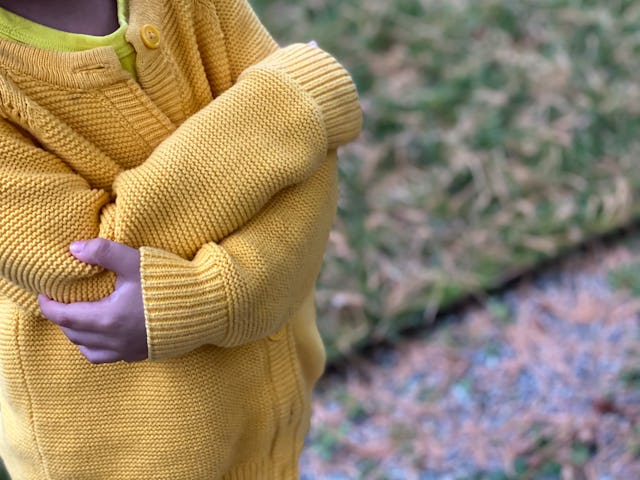The Day I Realized I Wasn’t Sending My Daughter A Strong Enough Message About Consent
It wasn’t on purpose, but I nevertheless communicated over and over again that what she wanted to do with her body didn’t matter.

My daughter L. was about 5 years old the first time I really saw her go “spikes out.” We were having a neighborhood get-together in our front yard, and all the kids were playing out on the driveway. L., petite for her age, was dealing with what all runty kids experience from time to time: She was being carried like a sack of potatoes by all the other children around the yard. It looked like fun, and as long as they didn’t drop her on the driveway, I wasn’t too concerned. But after just a few minutes she screamed, “Put me down!” and stormed into the house.
Everyone froze, looking uncertainly at each other and then at me. Thinking she was hurt, I followed her inside, scanning her for bumps and scrapes as she sobbed uncontrollably. “What happened?!” I asked. Through hitching breaths, she told me that she didn’t want to be picked up and was tired of being touched by everyone. “Why didn’t you just say that?” I asked, incredulously. “I don’t know!” she replied. Frustrated, I told her to cool off and come back out when she was ready, but her words stayed with me. How could she not know that she could just say no?
What I failed to realize at the time was that L. didn’t speak up because she hadn’t received a strong message of body autonomy from us, her parents. We had the “no one should ever touch your private parts” talk, but we never explained to our children that they have the right to say no to any kind of touch. Or that they had the right to expect to be asked permission before being touched. In fact, in many ways, I had modeled the exact opposite: “Oh, give Uncle *insert name of old college friend your child has never met* a hug!” or “Just climb up on that stranger’s lap” (i.e., Santa) and “Let *insert name of neighbor who was a nurse 20 years ago* look at that mole on your back.”
Even though it wasn’t on purpose, I had nevertheless communicated over and over again that what L. wanted to do with her body didn’t matter.
After reflecting on her question, I considered my twenty years as a classroom teacher and students who’ve had similar reactions to intrusions of their personal space. I thought about Raquelle who, exhausted by classmates constantly tugging on her glorious curls, started wearing her hair in a tight bun. And Starla, who stopped wearing her cozy fleece jacket when friends wouldn’t stop petting her. Or Matty, who shoved a boy into a wall when he got tired of him playfully jumping on his back. The lack of body autonomy my students endured clearly caused them discomfort, stress, and even anger.
It was clear my daughter wasn’t the only one who could use a positive and reaffirming message about personal consent, and so my book How to Hug a Pufferfish was born. L.’s sudden “blow up” in our yard that day reminded me of the way a pufferfish puffs up, protective spines all around, when brushed or agitated. And like my daughter’s need to cool down after going “spikes out,” a pufferfish needs several hours to depuff. It seemed the perfect metaphor to convey the experience of unwanted physical contact to a child. I also felt it necessary to acknowledge that just like Pufferfish’s friends, our desire to touch someone else is often with good intentions. Hugs, back pats, shoulder squeezes, and snuggles are how many of us demonstrate love, affection, and appreciation. But if we truly want to show someone how much we care, we’ll use a method that respects their personal needs.
L. has become much better about advocating for her personal space needs these days and I’m much better about modeling the kind of body consent I want her to take into her teenage years and beyond. We’ve practiced how to say “I need more space,” or “I don’t really want to be touched right now,” firmly and kindly, and the next steps to take if the behavior continues. Before a recent dermatology appointment, we talked about what she could wear that would allow the doctor to see a rash on her chest, while also preserving her sense of privacy. And in a big step for me, I asked someone if I could give them a hug the other day! When we’re empowered to ask for body consent and when we respect the request of consent from others, our relationships are a lot less prickly.
Ellie Peterson is a picture book author, illustrator, and science teacher living in the Seattle area. She is the author/illustrator of It’s A Round, Round World and The Reason for the Seasons. She was also the illustrator for Bea’s Bees by Katherine Pryor. Her work is inspired by her experiences teaching STEM, her upbringing as a biracial child in a military family, and her adventures in parenting.